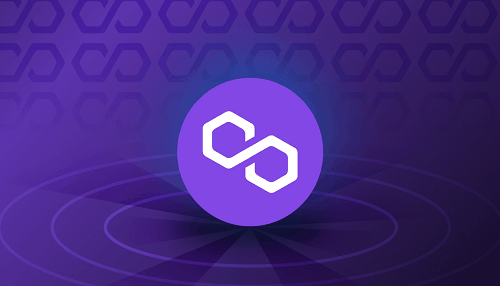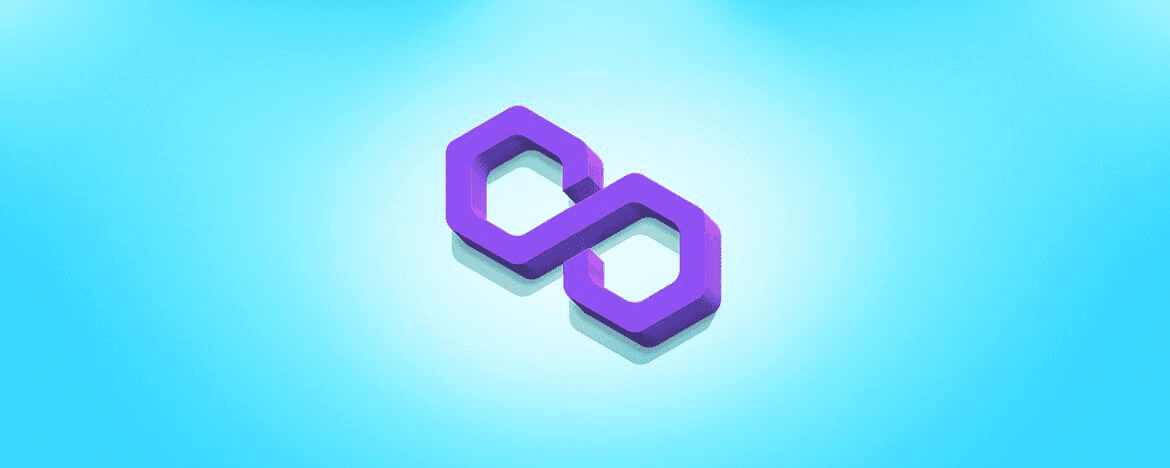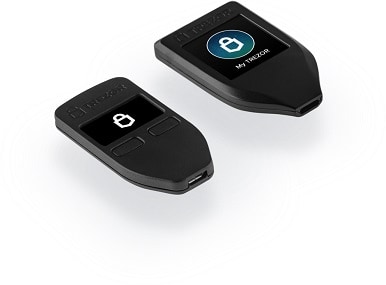How To Buy Polygon (MATIC)?

A common question you often see on social media from crypto beginners is “Where can I buy Polygon?” Well, you’ll be happy to hear it is actually quite a simple and straightforward process. Thanks to its massive popularity, you can now buy Polygon on most cryptocurrency exchanges, including Coinbase and Binance in 3 simple steps.
Step 1: Create an account on an exchange that supports Polygon (MATIC)
First, you will need to open an account on a cryptocurrency exchange that supports Polygon (MATIC).
We recommend the following based on functionality, reputation, security, support and fees:
1
Bybit
Fees (Maker/Taker) 0.1%*-0.1%*
Cryptocurrencies
Available for Trade 400+
Sign-up bonus
15% reduced trading fees & up to $30,000 sign-up bonus*
Available in
Europe, Asia, Oceania, Africa
2
Binance
Fees (Maker/Taker) 0.075%*-0.1%*
Cryptocurrencies
Available for Trade 500+
Sign-up bonus
10% reduced trading fees*
Available in
Europe, Asia, Oceania, Africa
In order to sign up, you will need to enter some basic information, such as your email address, password, full name and, in some cases, you might also be asked for a phone number or address.
Note: On specific exchanges, you might need to complete a Know Your Customer (KYC) procedure in order to be able to purchase cryptocurrency. This is most commonly the case with licensed and regulated exchanges.
Step 2: Deposit funds into your account
Many cryptocurrency exchanges will allow you to purchase Polygon (MATIC) with fiat currencies, such as EUR, USD, AUD and others. Furthermore, they will also provide you with multiple deposit methods through which you can fund your fiat account, such as credit and debit cards, ewallets or direct bank transfers.
Note: Some payment methods will have higher fees than others, such as credit card payments. Before funding your fiat account on your chosen exchange, make sure to do your due diligence to find out the fees involved with each payment method to avoid unnecessary costs.
Step 3: Buy Polygon (MATIC)
This process is similar across almost every cryptocurrency exchange. All you have to do is find a navigation bar or a search bar, and search for Polygon (MATIC) or Polygon (MATIC) trading pairs. Look for the section that will allow you to buy Polygon (MATIC), and enter the amount of the cryptocurrency that you want to spend for Polygon (MATIC) or the amount of fiat currency that you want to spend towards buying Polygon (MATIC). The exchange will then calculate the equivalent amount of Polygon (MATIC) based on the current market rate.
Note: Make sure to always double-check your transaction details, such as the amount of Polygon (MATIC) you will be buying as well as the total cost of the purchase before you end up confirming the transaction. Furthermore, many cryptocurrency exchanges will offer you their own proprietary software wallet where you will be storing your cryptocurrencies; however, you can create your own individual software wallet, or purchase a hardware wallet for the highest level of protection.
For more in-depth instructions, our ‘Absolute Beginner’s Guide To Cryptocurrency Investing‘ will take you through the process step-by step. In addition to providing instructions for sending and receiving your cryptocurrency.
And if you’re completely new to crypto our beginner, intermediate and advanced level articles will get you up to speed with everything you need to know about the cryptocurrency space starting out.
What is Polygon (MATIC)?
Polygon is a framework for creating Ethereum-compatible blockchain networks and scaling solutions. Polygon is more of a protocol than a single solution. This is why one of the main offerings of the ecosystem is the Polygon SDK, which allows developers to create these Ethereum-compatible networks.
Sidechains can offer several benefits – most notably, increased transaction throughput and low fees. If you’ve used the Polygon Network, you’ll know that it’s incredibly fast and very low-cost compared to Ethereum. Even so, there are some trade-offs to be made for this performance. We’ll get into these later.
As Polygon supports the Ethereum Virtual Machine (EVM), existing applications can be ported to it with relative ease. This can give users a comparable experience to Ethereum, only with the previously mentioned high throughput and low fees.
Who Are the Founders of Polygon?
Polygon (formerly Matic Network) was launched in October 2017. Polygon was co-founded by Jaynti Kanani, Sandeep Nailwal and Anurag Arjun, two experienced blockchain developers and a business consultant. Before moving to its network in 2019, the Polygon team was a huge contributor in the Ethereum ecosystem. The team worked on implementing the Plasma MVP, the WalletConnect protocol and the widely-used Dagger event notification engine on Ethereum. The team included co-founder of Polygon, Jaynti Kanani. Jaynti, a full-stack developer and blockchain engineer currently serves as the CEO of Polygon.
Jaynti played an integral role in implementing Web3, Plasma and the WalletConnect protocol on Ethereum. Prior to his blockchain involvement, Jaynti worked as a data scientist with Housing.com.
Co-founder and chief operations officer of Polygon, Sandeep Nailwal is a blockchain programmer and entrepreneur. Before jointly starting Polygon (formerly Matic), Sandeep had served as the CEO of Scopeweaver, and the chief technical officer of Welspun Group.
Anurag Arjun is the only non-programming co-founder of Polygon. As a product manager, he has had stints with IRIS Business, SNL Financial, Dexter Consultancy and Cognizant Technologies.
How does Polygon work?
The Polygon framework supports two major types of Ethereum-compatible networks: secured chains and stand-alone chains. An example for a secured chain is a rollup, while an example for a stand-alone chain is a sidechain.
Secured chains rely on the infrastructure of the chain they are attached to, so they don’t have to adopt their own security model. In contrast, stand-alone chains have to take care of their own security. This means that secured chains tend to offer a higher level of security, while stand-alone chains offer more flexibility for specific needs.
So, what about the Polygon Network? The Polygon sidechain is secured by its own set of validators (validator pool), and it has to submit checkpoints to Ethereum from time to time. This is why some people say that sidechains are not a “pure” Layer 2 solution. They have to take care of their own security instead of leveraging Ethereum’s security. This can be a crucial distinction, and we’ll get into it in a bit more detail later when discussing rollups.
What Are Layer-2 Solutions and Why Do We Need Them?
A layer-2 solution is a blockchain that runs parallel to a mainnet — in Polygon’s case, Ethereum — but processes transactions outside of the mainnet, resulting in an increased throughput (transaction speed) and lower gas fees.
In other words, layer-2s create a communication channel between the two blockchains and send the information package (the transaction data) from the mainnet to the parallel blockchain to execute the transaction for a fraction of the cost and at a much faster rate, all while not jeopardizing the Ethereum mainnet.
Because of its vast and secure infrastructure and innovative tooling, Ethereum is the go-to ecosystem for most software developers looking to launch their dApps (decentralized applications).
However, high demand for dApps and subsequent supply clogged the network, and its throughput has significantly decreased — it’s not uncommon to see gas fees rise to two or three digits in USD equivalent, which can be quite expensive depending on how much you interact with the network, leaving the Ethereum blockchain only for the ‘big players.’
This is why Layer 2 solutions have become critical to the DeFi ecosystem, as they improve Ethereum’s scalability and throughput while maintaining its security.
Polygon Bridge
Once it’s complete, however, you can enjoy the low fees and fast transactions that Polygon has to offer. Otherwise, some centralized exchanges (CEX) also offer direct withdrawal to the Polygon Network.
What is the MATIC Token?
MATIC is the Polygon network’s native cryptocurrency, and it is used to drive network development as well as for staking and payment of transaction fees.
MATIC tokens can be earned by providing computational resources and services to the Polygon network. This can be accomplished by validating transactions or running smart contracts on the network.
Furthermore, by owning and staking MATIC cryptocurrency, users gain the ability to vote on network upgrades, with each vote proportional to the amount of MATIC cryptocurrency staked.
MATIC tokens, like many other cryptocurrencies, have a limited supply, which means that according to the software’s rules, there will only ever be 10 billion MATIC coins in circulation.
How do you use the Polygon network?
The Polygon network allows you to do many of the same things as the main Ethereum network, but for a fraction of the cost. Try decentralized exchanges such as QuikSwap or SushiSwap, yield-generating lending and savings protocols such as Aave, NFT markets such as OpenSea, or even “no-loss prize games” such as Pooltogether.
To test the Polygon network, send some cryptocurrency to a compatible crypto wallet, such as the Coinbase Wallet. You can then “bridge” some of your crypto to the Polygon network — stablecoins are a popular choice for this. To make transactions, you’ll also need to bridge some MATIC, but even a dollar’s worth is plenty because the fees are so low.
The Polygon network is an excellent way to gain real-world experience testing DeFi protocols due to its low fees and near-instant transactions. (Keep in mind that DeFi can be highly volatile, so start small and invest no more than you can afford to lose, especially as a beginner.)
Polygon Development Updates in 2023
Polygon has made several significant strides in its development throughout 2023. Here’s a summary of the key updates:
-
Increased Network Activity: Polygon has seen a considerable increase in network activity. The total number of unique addresses on the network reached 200 million, a 54% year-over-year growth. Additionally, the network processed 960 million successful transactions. These metrics indicate a robust and expanding usage of the Polygon blockchain.
-
Launch of Polygon zkEVM: A major highlight for Polygon in 2023 was the launch of its ultimate scaling solution, Polygon zkEVM, on the testnet. This development is crucial as it aims to enhance Polygon’s scalability, making it more efficient for a wide range of applications.
-
Strategic Partnerships: Polygon has formed partnerships with globally renowned companies such as Adobe, Disney, Meta, the NFL, NuBank, Reddit, Robinhood, and Starbucks. These collaborations are expected to bring more utility and visibility to the Polygon network.
-
Focus on DeFi and Gaming: Polygon predicts that 2023 could be a pivotal year for DeFi (Decentralized Finance). The platform is expanding its foray into gaming, and some of the announcements made by established game development studios are expected to materialize this year.
-
Polygon ID Project: The Polygon ID project aims to rethink digital identity in Web 3. This initiative could lead to innovative applications and use cases on the Polygon network.
-
Polygon Connect Event and ZK Product Demo: In December, Polygon Labs announced the Polygon Connect event in India and a public demo of their next-generation ZK product. These events are part of their ongoing effort to enhance the network’s capabilities and showcase their advancements in technology.
-
Acentrik Partnership: An initiative by Mercedes-Benz, Acentrik, is building a decentralized data marketplace on Polygon. This partnership could open new opportunities for data sharing and monetization across different sectors.
-
Polygon 2.0 Developments: The Nansen report highlighted Polygon’s network resilience and a developer-friendly environment, making it a leading choice for building scalable applications. Polygon’s upcoming developments, particularly the Polygon 2.0 update, are expected to further boost its capabilities and appeal.
Overall, Polygon has had a dynamic and productive year, with significant advancements in technology, partnerships, and network activity, solidifying its position as a key player in the blockchain and cryptocurrency space.
Official website: https://polygon.technology/
Best cryptocurrency wallet for Polygon (MATIC)
There are plenty of different crypto wallets available. The best one for you depends on your general trading habits and which provides the most security in your situation. There are two main types of wallets: hot storage wallets (digital) and cold storage or hardware wallets (physical). Both have their pros and cons, and there is not necessarily a right or wrong answer when it comes to figuring out which crypto wallet is best for you.
HOW DO I DECIDE WHICH cryptocurrency WALLET TO USE for Polygon (MATIC)?
Deciding which type of wallet to use depends on a variety of factors, including:
- How often you trade. In general, hot wallets are better for more active cryptocurrency traders. Quick login ability means you are only a few clicks and taps away from buying and selling crypto. Cold wallets are better suited for those looking to make less frequent trades.
- What you want to trade. As mentioned earlier, not all wallets support all types of cryptocurrencies. However, some of the best crypto wallets have the power to trade hundreds of different currencies, providing more of a one-size-fits-all experience.
- Your peace of mind. For those worried about hacking, having a physical cold wallet stored in a safe deposit box at the bank or somewhere at home, provides the safest, most secure option. Others might be confident in their ability to keep their hot wallets secure.
- How much it costs. It is important to investigate the costs associated with each wallet. Many hot wallets will be free to set up. Meanwhile, cold wallets, like any piece of hardware, will cost money to purchase.
- What it can do. While the basics of each cryptocurrency wallet are the same, additional features can help set them apart. This is especially true of hot wallets, many of which come with advanced reporting features, insights into the crypto market, the ability to convert cryptocurrencies and more. Security features can also be a good differentiator.
For a more in-depth overview of cryptocurrency wallets visit our “Cryptocurrency Wallets Explained” guide.
If you’re going to be dealing in larger volumes of crypto, investing in cold storage might prove advantageous.
Most widespead examples of this being the Ledger Nano and the Trezor.
Ledger manufactures cold storage wallets designed for users who want increased security. Their wallets are a physical device that connects to your computer. Only when the device is connected can you send your cryptocurrency from it. Ledger offers a variety of products, such as the Ledger Nano S and the Ledger Nano X (a bluetooth connected hardware wallet).
Trezor is a pioneering hardware wallet company. The combination of world-class security with an intuitive interface and compatibility with other desktop wallets, makes it ideal for beginners and experts alike. The company has gained a lot of the Bitcoin community’s respect over the years. Trezor offers two main models – The Trezor One and Trezor Model T (which has a built in touch screen).
Polygon (MATIC) Price & Charts
- Market Capitalization And Daily Trading Volume
- Current Market Price Of Every Cryptocurrency Relative To USD (And Some Local Currencies)
- Circulating And Total Supply
- Historical Charts With Prices Relative To USD, Bitcoin (BTC), And Ethereum (ETH).


























